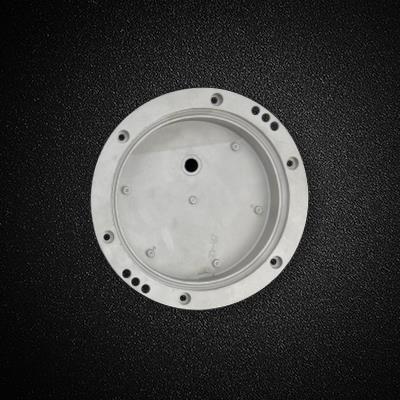Precision castingCauses of shrinkage cavity formation: The basic reason for the formation of shrinkage cavity is that during the liquid shrinkage and solidification of the alloy, a certain part of the casting (usually a solidified thermal joint) cannot get the shrinkage of the liquid metal in time, so that the shrinkage cavity occurs here.
For eutectic alloys or alloys with a narrow solidification temperature range, the castings are prone to concentrated shrinkage holes. When the alloy composition has been timed, the main reasons for the formation of shrinkage holes are uneven wall thickness of the casting, too many hot joints, too large, improper design of the pouring riser system, which is not conducive to sequential solidification, making the hot joints of the casting unable to replenish the molten metal. Or the pouring temperature is too high.
Precision castingPreventive measures for shrinkage:
1: Improve the structure of castings, strive for uniform wall thickness, reduce hot spots, or change the wall thickness, which is beneficial to cause sequential solidification.
2. Reasonably set up the nozzle system, resulting in sequential solidification. For complex parts with multiple hot spots, the nozzle system should be considered.
3. Assemble the modules reasonably so that there is a certain distance between the castings to prevent local heat dissipation difficulties.
4. The pouring temperature of the shell and molten metal should be appropriate, and the pouring temperature should not be too high.
5. When pouring, make sure the sprue and riser are filled with molten metal, or add heating agent and heat preservation agent to the sprue cup and riser.
6. Improve the smelting process, reduce the gas and oxides in the molten metal, and improve its fluidity and shrinkage ability.

Related News
- Precision casting mirror treatment and dewaxing casting
- Controlling the high quality of precision cast steel is the key
- Production Development of Guangdong Stainless Steel Casting Alloy Steel
- Characteristics of precision cast steel investment casting
- Dongguan precision casting kitchen hardware pendant varieties
- Processing steps and cleaning methods of Guangdong stainless steel castings
- Definition of Guangdong carbon steel casting
- Classification of Dongguan Precision Casting Special Casting
- Dongguan Precision Casting Factory
- What are the types of alloy steel casting hardware in Guangdong
- How to chemically clean stainless steel castings
- Reasons for bubbles in stainless steel precision casting
- What is the reason for the poor accuracy in precision casting
- Stainless steel castings ensure mirror finish
- Stainless steel casting steps: pickling
- Rust prevention knowledge of precision castings
- Precautions for the casting process of Guangdong carbon steel casting
- The importance of temperature control in the stainless steel casting process in Guangdong
- What are the necessary industry requirements for precision casting
- Why is there shrinkage porosity in stainless steel castings
